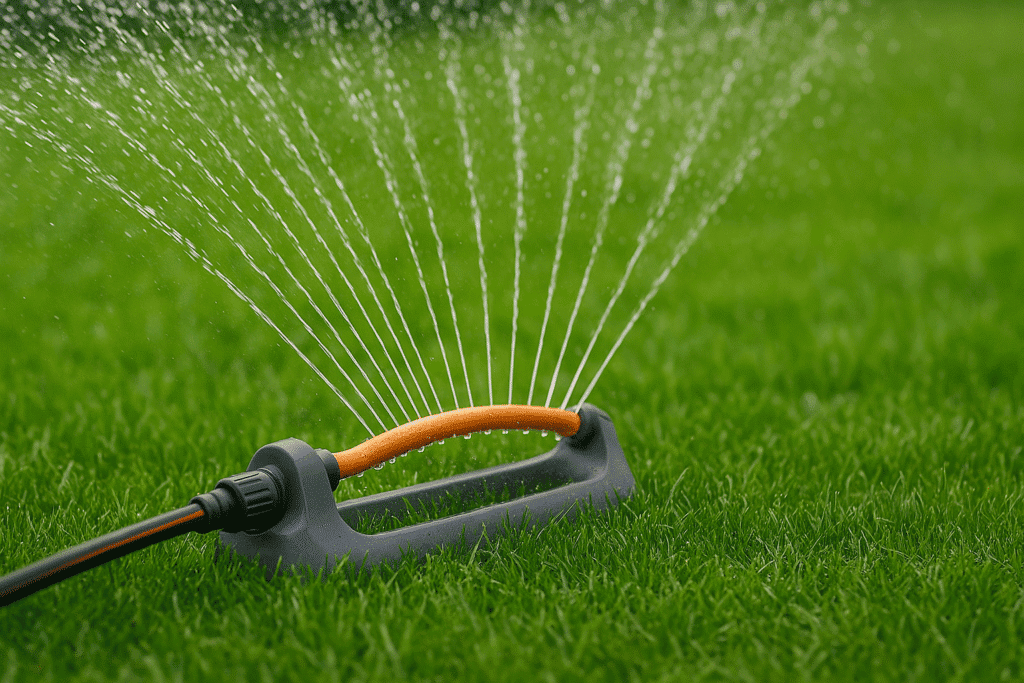The #1 Summer Lawn Care Mistake to Avoid (And What to Do Instead)
Avoid this Summer Lawn Care Mistake: Overwatering and Underwatering
There’s nothing better than a beautiful, green lawn in the summertime, but it takes a little extra care to get there. With longer days, hot sun, and less rainfall, your yard needs more attention than it does during cooler months. And while most homeowners have the best intentions, there’s one mistake that causes more damage than almost anything else: watering the wrong way.
Whether you're giving your grass too much water or not enough, poor watering habits can lead to brown patches, weak roots, and even pest problems. Avoiding this summer lawn care mistake (and a few others) is easy once you know what to look out for.
Overwatering and Underwatering: Finding the Right Balance
During the heat of summer, it’s easy to assume that your lawn needs to be soaked daily, but that approach can actually hurt more than it helps. Overwatering drowns the soil and weakens the root system, encouraging the roots to stay shallow instead of digging deeper. This leaves your lawn more vulnerable to heat stress and drought. It also creates the perfect conditions for mold and fungus to grow, which can quickly spread across your yard.

The problem with overwatering:
- Causes shallow root growth, which weakens your lawn’s ability to survive heat and drought
- Encourages fungal growth and disease in wet soil
- Washes away essential nutrients your grass needs to stay healthy
- Wastes water and can lead to higher utility bills
On the flip side, underwatering causes your grass to dry out and go dormant. You might notice the blades turning a dull brown or becoming brittle. Weeds love this kind of environment, and they take advantage of the struggling grass and quickly take over, making it even harder for your lawn to bounce back.
The problem with underwatering:
- Turns grass dry, brittle, and discolored
- Weakens roots and makes it harder for your lawn to recover
- Opens the door for weeds to invade and steal remaining moisture
- Long-term damage can make your lawn patchy and thin
So, what’s the right way to water in summer? It’s best to water deeply once a week or as needed for inch of water per week, including rainfall. Early morning is the ideal time to water, when the air is still cool and evaporation is low. If your area has watering restrictions, consider collecting rainwater or installing drip irrigation to conserve water while keeping your plants hydrated.

Skipping Regular Maintenance? Your Lawn Will Notice
Watering is important, but it's just one part of the picture. Regular lawn maintenance like mowing, feeding, and pest control plays a huge role in keeping your yard looking its best.
Mowing too short can shock your grass and leave the soil exposed to heat. On the other hand, letting the grass grow too long makes it easier for weeds to take over and blocks sunlight from reaching the lower blades. A good mowing routine (about once a week during peak growing season) helps maintain even growth and prevents unnecessary stress on your lawn.
Feeding your lawn is just as important. By midsummer, many lawns are running low on nutrients. Without proper fertilization, grass can become thin, pale, and more prone to disease. A slow-release summer fertilizer helps strengthen roots, boost color, and improve overall resilience against drought and pests.
Pest control is another key part of summer care. Grubs, beetles, and other insects thrive in warm weather. If you start noticing brown patches or thinning areas that peel up easily, pests might be the culprit. Taking action early whether with organic or targeted treatments can prevent widespread damage.

Chemical Care: Handle With Caution
Many homeowners reach for chemical treatments to fix lawn issues quickly, but if these products are used incorrectly, they can do more harm than good.
Applying too much fertilizer or weed killer can lead to “chemical burn,” where grass turns yellow or brown and struggles to grow back. It can also harm helpful insects and impact nearby water systems through runoff. Even the timing of your application matters. If it’s too hot or if rain is expected, the product might not work effectively and could even backfire.
It’s always smart to apply lawn treatments early in the morning or later in the day when the sun isn’t as intense. Read the label carefully and avoid using chemicals just before heavy rain. If you’re concerned about the impact on the environment or your pets, consider switching to organic fertilizers and natural pest controls which nourish your yard while keeping it safe for kids, animals, and pollinators like bees and butterflies.
Summer Lawn Care Doesn’t Have to Be Complicated
Taking care of your lawn this summer comes down to a few simple habits. Avoid overwatering or underwatering, mow regularly, feed your lawn with the right nutrients, and stay on top of pest control. Be thoughtful with any chemical treatments, and consider eco-friendly alternatives when you can.
With just a little bit of effort, your yard can stay green, full, and inviting without the frustration that comes from common mistakes.
Need a Hand with Lawn Care This Summer?
If you’re in Lock Haven, PA and want a great-looking lawn without spending your whole summer working on it, GrowsMows is here to help. Whether it’s mowing, edging, garden bed cleanups, or seasonal maintenance, we’ve got you covered.
Call or text Cole today at or email us at Cole@GrowsMows.com to schedule a free estimate.
Connect with us on Facebook or Instagram.
Let us do the hard work, so you can enjoy the view.